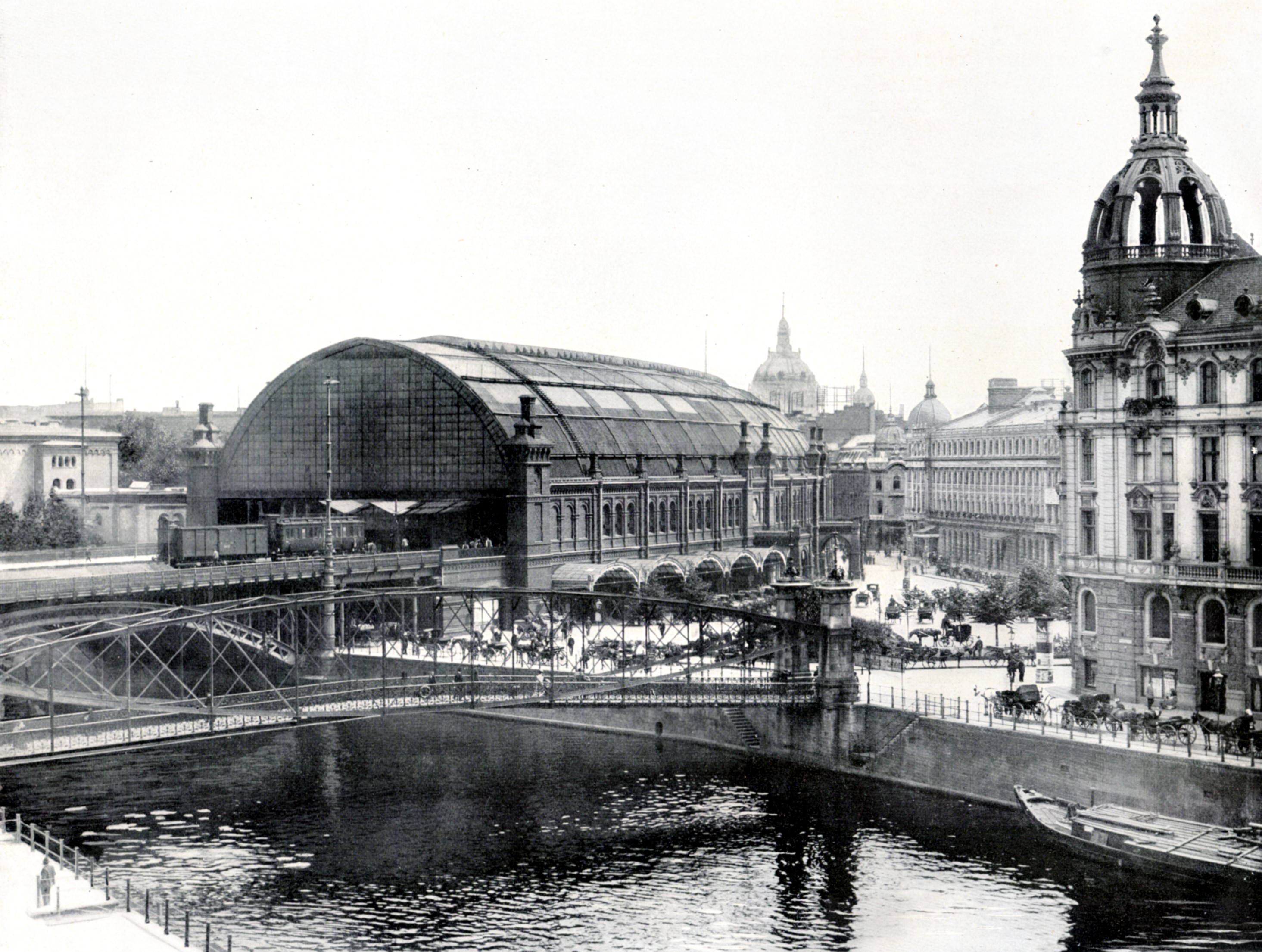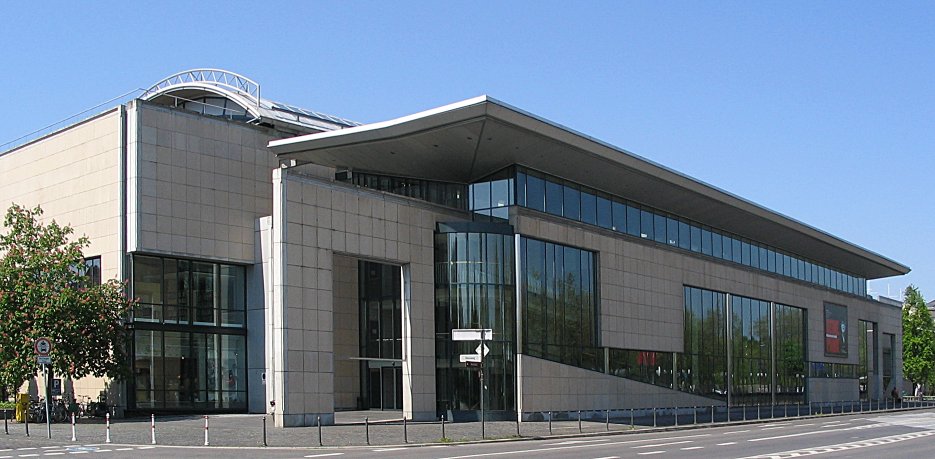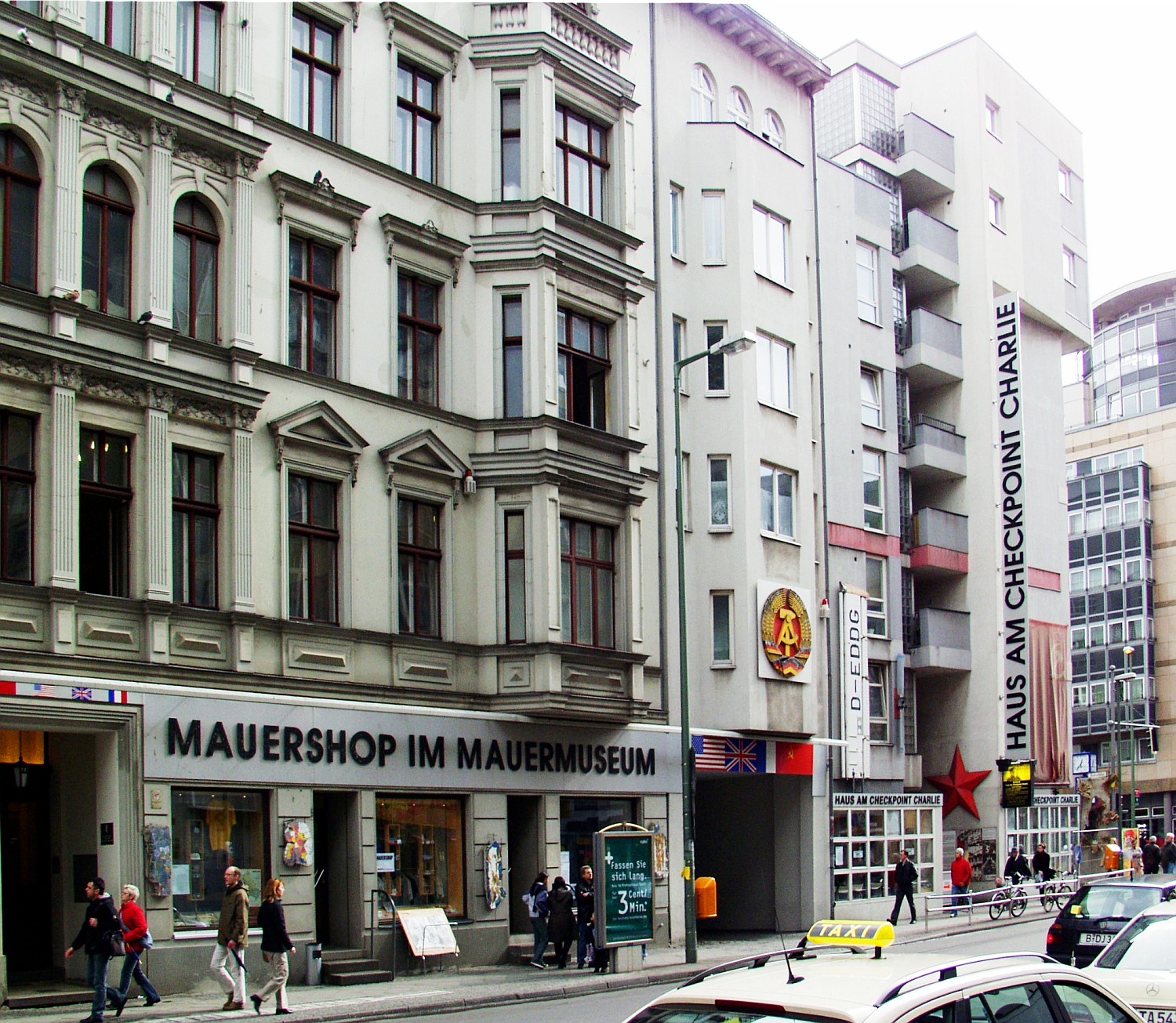|
Tränenpalast
The ''Tränenpalast'' ( en, "Palace of Tears") is a former border crossing point between East and West Berlin, at Berlin Friedrichstraße station, which was in operation between 1962 and 1989. It is now a museum with exhibitions about Berlin during the Cold War period and about the process of German reunification. It was the border crossing for travellers on the S-bahn, U-bahn and trains going between East and West Germany. It was used only for westbound border crossings. It had separate checkpoints for West Berliners, West Germans, foreigners, diplomats, transit travellers and East Germans. The term ''Tränenpalast'' is derived from the tearful partings that took place in front of the building between western visitors and East German residents who were not permitted to travel to West Berlin. Border station during the time of the Berlin Wall Although Berlin Friedrichstraße station was located entirely in East Berlin, because of the Berlin Wall some S-bahn and U-bahn lin ... [...More Info...] [...Related Items...] OR: [Wikipedia] [Google] [Baidu] |
Berlin Friedrichstraße Station
Berlin Friedrichstraße () is a railway station in the German capital Berlin. It is located on the Friedrichstraße, a major north-south street in the Mitte district of Berlin, adjacent to the point where the street crosses the river Spree. Underneath the station is the U-Bahn station ''Friedrichstraße''. Due to its central location in Berlin and its proximity to attractions such as the Unter den Linden boulevard, the Brandenburg Gate and the Reichstag, the station is a favorite destination for tourists. At the same time, it is the main junction for regional traffic in Berlin, measured by the number of passengers. During the Cold War, Friedrichstraße became famous for being a station that was located entirely in East Berlin, yet continued to be served by S-Bahn and U-Bahn trains from West Berlin as well as long distance trains from countries west of the Iron Curtain. The station also was a major border crossing between East and West Berlin. History The initial station ... [...More Info...] [...Related Items...] OR: [Wikipedia] [Google] [Baidu] |
Haus Der Geschichte
Haus der Geschichte (officially ''Haus der Geschichte der Bundesrepublik Deutschland'', i.e. "House of the History of the Federal Republic of Germany") is a museum of contemporary history in Bonn, Germany. With around one million visitors every year, it is one of the most popular German museums. The Haus der Geschichte is, as well as the "Zeitgeschichtliches Forum Leipzig", the "Tränenpalast" am Bahnhof Friedrichstraße and the "Museum in the Kulturbrauerei" part of the ''Haus der Geschichte der Bundesrepublik Deutschland Foundation''. The foundation's place of business is Bonn. In its permanent exhibition, the Haus der Geschichte presents German history from 1945 until the present. Numerous temporary exhibitions emphasize different features. The Haus der Geschichte also organizes guided tours of the Palais Schaumburg (has been closed since August 2013 because of building restoration), the Chancellor's bungalow and the former place of the Federal Assembly. Moreover, the museum ... [...More Info...] [...Related Items...] OR: [Wikipedia] [Google] [Baidu] |
Zeitgeschichtliches Forum Leipzig
The Zeitgeschichtliches Forum Leipzig (English: ''Forum of Contemporary History'') is a museum of contemporary German history. The museum was opened in 1999 and focuses on the history of the German division, everyday life in the communist dictatorship of the GDR, and the reunification process. It is located in the city center of Leipzig, Germany. The permanent exhibition gives insight into the history of opposition and civil disobedience in the repressive one-party state of the Socialist Unity Party of Germany (SED). Furthermore, it focuses on the history of everyday life in the Soviet Occupation Zone and the GDR from the end of World War II in 1945 until the Peaceful Revolution of 1989 and German reunification. The fundamental revision of the permanent exhibition, completed in 2018, gives more space to the time period after the reunification. New topics are the successes and difficulties or growing together, international terrorism, digitization and globalization. 2000 objects, ... [...More Info...] [...Related Items...] OR: [Wikipedia] [Google] [Baidu] |
Museum In The Kulturbrauerei
The Museum in the Kulturbrauerei is a museum of contemporary German history. The permanent exhibition focuses on everyday life in the German Democratic Republic. It is located in the Kulturbrauerei building complex in Prenzlauer Berg district (Borough of Pankow) in Berlin, Germany. The subject of the permanent exhibition presented by the Museum in the Kulturbrauerei is "Everyday life in the GDR". It shows the complex tension between the expectations of the political system and the real living conditions of the people in the GDR. The Industrial Design Collection brings together products, posters, archive materials and photographs to document the history of design and culture in everyday life in the Soviet Occupied Zone/East Germany. The exhibition consists of around 800 original objects as well as over 200 documents, film and sound recordings and biographical reports. The Museum in the Kulturbrauerei opened its doors for visitors in November 2013. It is located in the former Sc ... [...More Info...] [...Related Items...] OR: [Wikipedia] [Google] [Baidu] |
West Berlin
West Berlin (german: Berlin (West) or , ) was a political enclave which comprised the western part of Berlin during the years of the Cold War. Although West Berlin was de jure not part of West Germany, lacked any sovereignty, and was under military occupation until German reunification in 1990, the territory was claimed by the West Germany, Federal Republic of Germany (FRG) which was heavily disputed by the Soviet Union and other Eastern Bloc countries. However, West Berlin de facto aligned itself politically with the FRG on 23 May 1949, was directly or indirectly represented in its federal institutions, and most of its residents were citizens of the FRG. West Berlin was formally controlled by the Western Allies and entirely surrounded by the Soviet Union, Soviet-controlled East Berlin and East Germany. West Berlin had great symbolic significance during the Cold War, as it was widely considered by westerners an "island of free world, freedom" and America's most loyal counterpa ... [...More Info...] [...Related Items...] OR: [Wikipedia] [Google] [Baidu] |
Imperial Harem
The Imperial Harem ( ota, حرم همايون, ) of the Ottoman Empire was the Ottoman sultan's harem – composed of the wives, servants (both female slaves and eunuchs), female relatives and the sultan's concubines – occupying a secluded portion (seraglio) of the Ottoman imperial household. This institution played an important social function within the Ottoman court, and wielded considerable political authority in Ottoman affairs, especially during the long period known as the Sultanate of Women (approximately 1533 to 1656). Multiple historians claim that the sultan was frequently lobbied by harem members of different ethnic or religious backgrounds to influence the geography of the Ottoman wars of conquest. The utmost authority in the Imperial Harem, the valide sultan, ruled over the other women in the household; the consorts of the sultan were normally of slave origin, and thus were also his mother, the valide sultan. The Kizlar Agha (, also known as the "Chief Black Eu ... [...More Info...] [...Related Items...] OR: [Wikipedia] [Google] [Baidu] |
Museums In Berlin
A museum ( ; plural museums or, rarely, musea) is a building or institution that cares for and displays a collection of artifacts and other objects of artistic, cultural, historical, or scientific importance. Many public museums make these items available for public viewing through exhibits that may be permanent or temporary. The largest museums are located in major cities throughout the world, while thousands of local museums exist in smaller cities, towns, and rural areas. Museums have varying aims, ranging from the conservation and documentation of their collection, serving researchers and specialists, to catering to the general public. The goal of serving researchers is not only scientific, but intended to serve the general public. There are many types of museums, including art museums, natural history museums, science museums, war museums, and children's museums. According to the International Council of Museums (ICOM), there are more than 55,000 museums in 202 countries ... [...More Info...] [...Related Items...] OR: [Wikipedia] [Google] [Baidu] |
Allied Occupation Of Germany
Germany was already de facto occupied by the Allies from the real fall of Nazi Germany in World War II on 8 May 1945 to the establishment of the East Germany on 7 October 1949. The Allies (United States, United Kingdom, Soviet Union, and France) asserted joint authority and sovereignty at the 1945 Berlin Declaration. At first, defining Allied-occupied Germany as all territories of the former German Reich before Nazi annexing Austria; however later in the 1945 Potsdam Conference of Allies, the Potsdam Agreement decided the new German border as it stands today. Said border gave Poland and the Soviet Union all regions of Germany (eastern parts of Pomerania, Neumark, Posen-West Prussia, Free City of Danzig, East-Prussia & Silesia) east of the Oder–Neisse line and divided the remaining "Germany as a whole" into the four occupation zones for administrative purposes under the three Western Allies (the United States, the United Kingdom, and France) and the Soviet Union. Although the ... [...More Info...] [...Related Items...] OR: [Wikipedia] [Google] [Baidu] |
Berlin Border Crossings
The Berlin border crossings were border crossings created as a result of the post-World War II division of Germany. Prior to the construction of the Berlin Wall in 1961, travel between the Eastern and Western sectors of Berlin was completely uncontrolled, although restrictions were increasingly introduced by the Soviet and East German authorities at major crossings between the sectors. This free access, especially after the closure of the Inner German border, allowed the Eastern Bloc emigration and defection to occur. East German officials, humiliated by this mass defection, subsequently chose to erect the Berlin Wall in order to prevent residents from leaving East Germany. After the construction of the Berlin Wall in 1961, border stations between East Berlin (regarded as East Germany's capital by the German Democratic Republic but unrecognized by the Western Allies) and the sectors controlled by those three Western Allies were created. Although there were few crossings at fir ... [...More Info...] [...Related Items...] OR: [Wikipedia] [Google] [Baidu] |
Buildings And Structures In Berlin
A building, or edifice, is an enclosed structure with a roof and walls standing more or less permanently in one place, such as a house or factory (although there's also portable buildings). Buildings come in a variety of sizes, shapes, and functions, and have been adapted throughout history for a wide number of factors, from building materials available, to weather conditions, land prices, ground conditions, specific uses, prestige, and aesthetic reasons. To better understand the term ''building'' compare the list of nonbuilding structures. Buildings serve several societal needs – primarily as shelter from weather, security, living space, privacy, to store belongings, and to comfortably live and work. A building as a shelter represents a physical division of the human habitat (a place of comfort and safety) and the ''outside'' (a place that at times may be harsh and harmful). Ever since the first cave paintings, buildings have also become objects or canvasses of much artistic ... [...More Info...] [...Related Items...] OR: [Wikipedia] [Google] [Baidu] |
Stasi Museum
The Stasi Museum (also known in German as the ''Forschungs- und Gedenkstätte Normannenstraße'') is a research and memorial centre concerning the political system of the former East Germany. It is located in the Lichtenberg locality of Berlin, in the former headquarters of the Stasi (officially the ''Ministerium für Staatssicherheit''), on Ruschestraße, near Frankfurter Allee and U-Bahn station Magdalenenstraße. History The centrepiece of the exhibition is the office and working quarters of the former Minister of State Security – i.e. head of the Stasi – Erich Mielke. The museum is operated by the ''Antistalinistische Aktion Berlin-Normannenstraße'' (ASTAK), which was founded by civil rights activists in Berlin in 1990.Trägerverein ASTAK e.V. From the home page. [...More Info...] [...Related Items...] OR: [Wikipedia] [Google] [Baidu] |
Haus Am Checkpoint Charlie
The Checkpoint Charlie Museum (german: Das Mauermuseum – Museum Haus am Checkpoint Charlie) is a private museum in Berlin. It is named after the famous crossing point on the Berlin Wall, and was created to document the so-called "best border security system in the world" (in the words of East German general Heinz Hoffmann). On display are the photos and related documents of successful escape attempts from East Germany, together with the escape apparatus: hot-air balloons, getaway cars, chairlifts, and a mini-U-boat. The museum researches and maintains a list of deaths at the Berlin Wall. It is operated by the ''Mauermuseum-Betriebs gGmbH'', and the director is Alexandra Hildebrandt. History The ''Arbeitsgemeinschaft 13. August'' is an association named after the date the Berlin Wall was constructed. It was formed with the purpose to fight against human rights violations as a result of the wall, and to create solutions through activities such as press conferences, publish ... [...More Info...] [...Related Items...] OR: [Wikipedia] [Google] [Baidu] |



.png)
.jpg)


